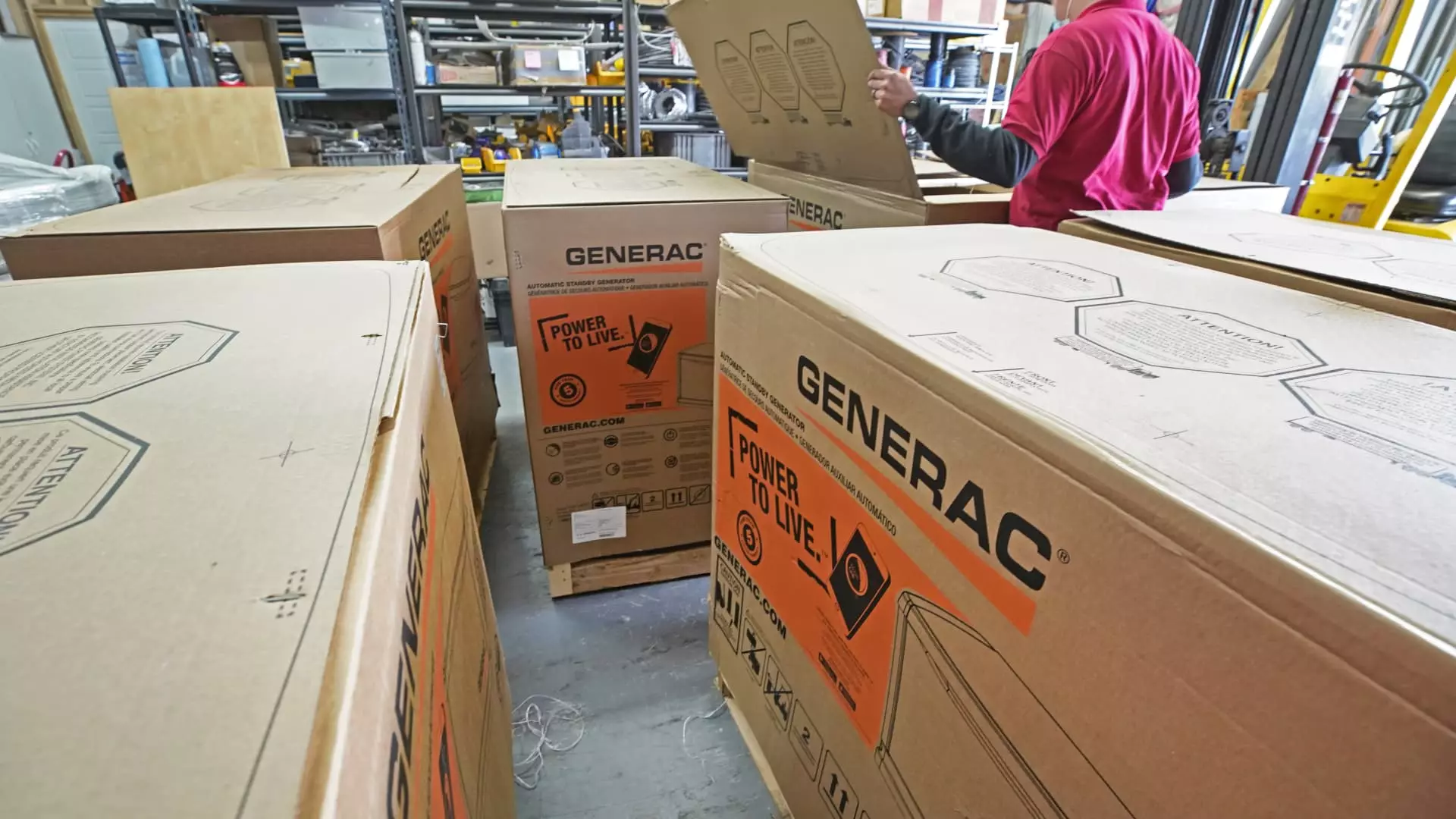As summer rolls in with blistering heat and the tumult of hurricane season, savvy investors are flocking to Generac, the powerhouse behind backup generators. In the backdrop of escalating temperatures and disruptive storms that threaten power reliability, the surge in Generac’s stock is emblematic of a broader trend where extreme weather intricately weaves through finance. The company has already garnered significant attention, achieving nearly 12% growth in just one week. However, the rising stock price isn’t merely a reflection of good business practices—it symbolizes a reactionary stance to the failings of our existing power grid amid unprecedented climate shifts.
With weather forecasts predicting an above-average Atlantic hurricane season, the urgency to secure stable energy sources becomes paramount. The National Oceanic and Atmospheric Administration projects a potential rise in named storms and hurricanes, and investors are acutely aware of how this could significantly strain our aging infrastructure. Generac’s jump in share prices sends a clear message: in the face of climate unpredictability, the demand for energy independence is not just smart—it’s essential.
Heat Waves and Power Outages: A Catalyst for Change
The heat wave currently sweltering parts of the U.S. is more than just an uncomfortable inconvenience; it’s a wake-up call. Reports of power outages across states ranging from New York to Illinois highlight a failing power grid that is buckling under the dual pressure of extreme heat and increased electricity demand. Approximately 130 million Americans are under extreme heat warnings, and yet, discussions around improving our electrical infrastructure remain agonizingly slow.
Generac shines brightly in this scenario, as consumers and businesses alike acknowledge the glaring need for reliable backup solutions. Companies like Generac are positioned to benefit from these real grievances faced by citizens: being left in the dark, literally and metaphorically. Electric grid dependability is a national security concern that extends beyond casual debates, pushing the narrative towards renewable solutions and backup power systems.
The Long-Term Energy Demand Dynamics
Bank of America’s estimation of a 2.5% compound annual growth rate in electrical load from now until 2035 serves as a stark reminder that our energy needs are climbing. No longer can we afford to operate under a reactive model; the time has come for proactive measures to ensure sustainable and resilient energy systems.
While Generac is profiting from immediate investor interest, it’s the ancillary areas of energy that also beckon attention. Companies like Trane Technologies are gearing up to meet evolving cooling demands, particularly in a world increasingly dependent on data centers. The generational shift towards technology-heavy operations means that utilities and service providers must adapt to meet these needs. Perhaps now is the time for a full-scale reevaluation of our power strategies—returning to alternative energies, incentivizing innovation, and supporting policies that can effectively address the great power divide.
The Role of Utility Stocks and Market Strategy
The utilities sector is witnessing a newfound significance within investment portfolios. With the ongoing discussions around power shortages and heightened demand, organizations like Constellation Energy and Vistra are expected to see “significant” tailwinds enhancing their economic outlooks. However, what stands out in this scenario is the selectivity that Bank of America advises; merely hopping onto the utility stock bandwagon isn’t enough.
Investors are urged to look for lagging stocks that could morph into outperformers based on their unique attributes and potential catalysts. Companies such as Sempra, Northwestern Energy, and Alliant Energy might hold the keys to opportunities that can carve out profitability in this otherwise tumultuous landscape.
The mounting heat and storm pressures symbolize not just environmental and humanitarian challenges, but also present golden opportunities for savvy investors. Generac’s rise is merely the beginning of a much larger conversation. As conversations about energy sufficiency grow louder, so too do the stakes for both investors and consumers alike. In an era where climate change dominates the headlines, embracing innovative technologies for a sustainable future becomes not just a corporate responsibility but a societal imperative. The days of complacency regarding our energy requirements are over; investors need to take the reins and push for advancements in energy resilience.

